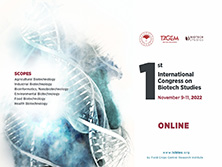THE DETERMINATION OF FORAGE GRASSES, LEGUMES AND THEIR MIXTURES FOR USE IN PASTURES
According to average of three years, hay yield and crude protein yield of mixtures were higher than that of pure stands. The highest hay yield was in double mixtures of white clover with red fescue (Nova Rubra), meadow fescue and bromegrass, and double mixtures of birdsfoot trefoil with red fescue (Nova Rubra and Victor), perennial ryegrass (diploid), meadow fescue and bromegrass. Of the above double mixtures, white clover + red fescue (Nova Rubra), birdsfoot trefoil + red fescue (Nova Rubra and Victor), birdsfoot trefoil + perennial ryegrass (diploid) and birdsfoot trefoil + meadow fescue had higher crude protein yields. The highest crude protein content (18.93%) was in pure white clover stands, the highest legume ratio (60.9%) in birdsfoot trefoil + perennial ryegrass (diploid) and the highest mixture efficiency (1.68) in birdsfoot trefoil + red fescue (Nova Rubra).
Keywords : Forage species; pasture; hay yield; crude protein














